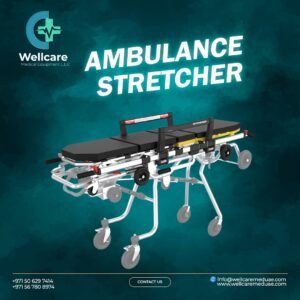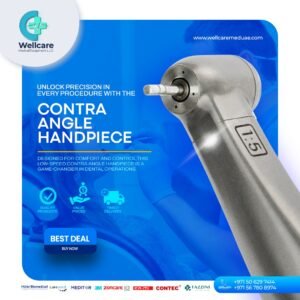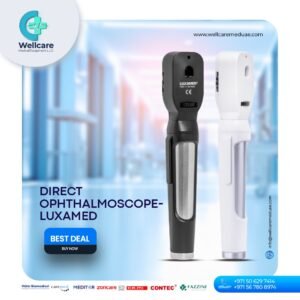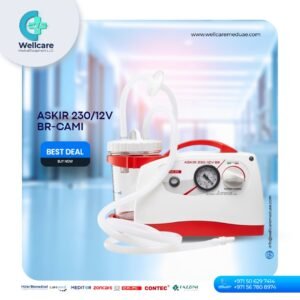Ambulance-Emergency Rescue Equipments supplier in UAE
Ambulance and emergency rescue equipment hold significant importance in the UAE, where rapid medical response is a cornerstone of public safety. In a country known for its modern infrastructure and fast-paced urban development, the ability to quickly address medical emergencies is crucial. Ambulances equipped with advanced life support systems and state-of-the-art technology ensure that patients receive immediate care at the scene, which is often the difference between life and death in critical situations such as cardiac arrests or severe accidents. The UAE's status as a global tourism and business hub further amplifies the need for efficient emergency medical services. With millions of visitors attending events like Expo 2020, the Abu Dhabi Grand Prix, and various international conferences, the presence of well-equipped ambulances ensures that any medical emergencies are swiftly and effectively managed. This not only protects the well-being of attendees but also reinforces the UAE's reputation as a safe and reliable destination for global events. In addition to urban centers, the accessibility of healthcare in more remote or accident-prone areas of the UAE is greatly enhanced by the presence of mobile emergency services. Ambulances act as a critical link between these areas and the country's advanced healthcare facilities, ensuring that even those far from hospitals receive timely medical attention. This is particularly vital in a country where geographic and infrastructural challenges can otherwise limit access to emergency care. The UAE's commitment to maintaining a high standard of healthcare is reflected in its investment in modernizing emergency medical services. By equipping ambulances with the latest medical technology and training personnel to the highest standards, the country ensures that patients receive top-quality care during transit. This focus on excellence is part of the broader healthcare strategy in the UAE, where patient outcomes are prioritized through the use of advanced medical interventions from the moment an emergency occurs. Furthermore, ambulance and emergency rescue services are integral to the UAE's disaster preparedness plans. Whether responding to natural disasters like sandstorms and floods or managing large-scale accidents, these services are essential for efficient evacuation, treatment, and transport of casualties. The presence of a well-coordinated emergency response system strengthens the country's ability to protect its population and manage crises effectively. Lastly, the UAE's growing population, driven by both local growth and an influx of expatriates, places increasing demands on emergency medical services. The role of ambulances in catering to the diverse healthcare needs of this expanding population cannot be overstated. By ensuring that every resident and visitor has access to rapid and effective medical care, the UAE continues to build a resilient and responsive healthcare infrastructure capable of meeting the challenges of a dynamic and evolving society.
Well Care Medical Equipment LLC, a prominent supplier in the UAE, plays a crucial role in providing high-quality ambulance and emergency rescue equipment. Their products are designed to meet the rigorous demands of emergency medical services, ensuring that healthcare providers can deliver prompt and effective care in critical situations.
Key Offerings by Well Care Medical Equipment:
Ambulance Equipment: Well Care supplies a range of essential ambulance equipment, including advanced life support systems, patient monitoring devices, and oxygen delivery systems. These tools are vital for stabilizing patients during transport, ensuring they receive immediate and appropriate care en route to healthcare facilities.
Emergency Rescue Tools: The company also provides specialized rescue tools like defibrillators, extrication devices, and portable ventilators. These are crucial in emergency scenarios where quick intervention can save lives, such as in cases of cardiac arrest or severe trauma.
Patient Transport Solutions: Well Care offers a variety of stretchers, spine boards, and immobilization devices that are essential for safely transporting patients from the scene of an emergency to the ambulance, and subsequently to the hospital. These products are designed for ease of use and maximum patient comfort, even in challenging environments.
Communication and Monitoring Systems: Recognizing the importance of real-time data and communication in emergencies, Well Care provides advanced monitoring systems and two-way communication devices. These tools help medical teams stay connected with dispatch centers and hospitals, ensuring that critical information is relayed promptly.
Personal Protective Equipment (PPE): To safeguard both patients and healthcare providers, Well Care supplies a range of PPE, including gloves, masks, gowns, and face shields. This equipment is essential for maintaining hygiene and preventing the spread of infections during emergency responses.
By offering a comprehensive range of ambulance and emergency rescue equipment, Well Care Medical Equipment LLC supports the UAE’s healthcare infrastructure, ensuring that emergency medical services are well-equipped to handle any situation. Their products contribute significantly to the efficiency and effectiveness of emergency responses across the country.




